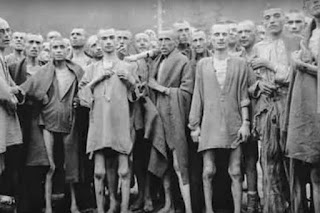A lone captured Soviet soldier standing in the middle of his German captures after attempting to break out of Vyazemsky during Operation Typhoon, September 1941

A lone captured Soviet soldier standing in the middle of his German captures after attempting to break out of Vyazemsky during Operation Typhoon, September 1941. The young man seems to be confused about the situation. Operation Taifun was the name of the Wehrmacht High Command's plan for the occupation of Moscow. The operation was part of Operation Barbarossa and, like the latter, was planned long before implementation. The plan included in detail the movements of the troops and the dates by which maneuvers had to be carried out. In this original plan of Operation Barbarossa, Moscow was to fall into German hands exactly 5 weeks after the invasion of the Soviet Union, which began on June 22, 1941. For this, the troops had to reach the city in early August. The fall of Moscow, and the associated collapse of the Soviet command structure and supplies (Moscow was the country's central rail hub), were expected to give German forces strategic freedom to occupy the entire E...
.jpeg)









